The combination of radio stations looking for new sources of revenue and advertisers searching for marketing opportunities beyond traditional spots has led to a growth spurt for station branded events. For many broadcasters, they’re becoming a bigger and bigger part of radio’s path of future growth.
But creating an event from the ground up is anything but easy. From finding a concept that resonates with listeners to all the details that go into the actual execution, revenue generating events are difficult to execute at best, and at worst, can even drag a station’s ratings performance off course.
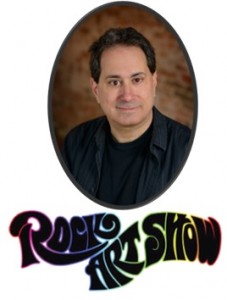 That’s what makes Scott Segelbaum’s “Rock Art Show” so unique. A former marketing director for several major market Classic Rock stations, Segelbaum launched his first show in 1991 while at KLSX/Los Angeles. Since then the concept has grown into a diverse franchise, featuring artwork created by rock stars, famous photographers, and concert poster artists. These exhibits also include limited edition gold records, Beatles animation, and more.
That’s what makes Scott Segelbaum’s “Rock Art Show” so unique. A former marketing director for several major market Classic Rock stations, Segelbaum launched his first show in 1991 while at KLSX/Los Angeles. Since then the concept has grown into a diverse franchise, featuring artwork created by rock stars, famous photographers, and concert poster artists. These exhibits also include limited edition gold records, Beatles animation, and more.
Seizing the opportunity, Segelbaum started “The Rock Art Show,” which now tours the country, working with stations in all size markets to deliver a turn-key event. The show includes a charity component and typically garners local press coverage.
I met Scott back when he was the promotions guy at WYSP during the first Andy Bloom Era. He always had a great sense of style and showbiz. As the Classic Rock Era grew, Scott’s presence blossomed as he developed an eye for what resonated with audiences, and how event marketing could play a major role creating unique experiences and generating a lot of revenue.
We asked Scott to share his story about how “The Rock Art” show evolved, its impact on the bottom line (and ratings), and his thoughts on music as a visual medium.
JM: What makes “The Rock” Art Show different from other radio events?
Scott: It brings the artists and the station to life. On a Classic Rock station, you are essentially playing the same body of music with no new material. “The Rock Art Show” adds a new dimension. It also gives the airstaff on-air content. Instead of backselling “Stairway to Heaven” for the thousandth time, personalities can talk about rare, never seen before Led Zeppelin photos at their station branded event.
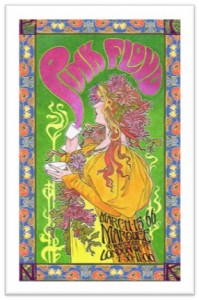 JM: How did the idea come about originally?
JM: How did the idea come about originally?
Scott: I have always been a strong advocate of unique events and promotions that enhance the image of the radio station, create press opportunities, and get people talking. Great promotions speak to the core of your audience and build cume. They are memorable, interactive and brand the station by focusing on its greatest attributes, the music and the musicians.
This concept was born out of my love of John Lennon’s artwork. In the late ‘80s, there was no such thing as “rock art,” but three key classic rockers were publishing their works: John Lennon, Jerry Garcia, and Ronnie Wood. I noticed that many classic rock artists went to art school, so it made sense that they were artistically inclined. A lightbulb went off and I imagined an art show filled with the works of these artists.
We pitched publicists, managers, record company execs, even mailing to home addresses of artists to create works of art for our first “art show” in Los Angeles. In a strange way, it created a new vehicle for their creativity. Many artists that donated to our show signed with art publishers including John Entwistle, Ringo Starr, Jon Anderson, Micky Dolenz, Robby Krieger, and others. I was even asked to consult a book published in the ‘90s entitled Musicians As Artists.
JM: What were the biggest impediments in putting on the first one? How did you overcome them?
Scott: The biggest challenge was getting proposals to the actual artists. If we got to an artist directly, they almost always participated. But the more layers of people, the less chance of success. For our original show, we mailed out 500 proposals and received artwork from about 50 people. We added rock photographers, poster artists, and others to fill out the show.
JM: In the early years, the event was attended by a lot of high-profile artists. How did you get them to commit?
Scott: When we launched the first “Rock Art Show,” it was before eBay, and artists were more likely to do an original art piece for charity. The concept struck a chord (pardon the pun) with the artists because all the proceeds were donated to the American Foundation for AIDS Research. At our opening reception, we hosted live appearances from Elton John, Stevie Nicks, Graham Nash, Brian Wilson, Brian Setzer, Robby Krieger, and Jon Anderson to name a few. Entertainment Tonight, Extra, E! were all there to cover it, and paparazzi set-up in front of the venue. There was a Hollywood premiere buzz about it – for a local radio promotion!
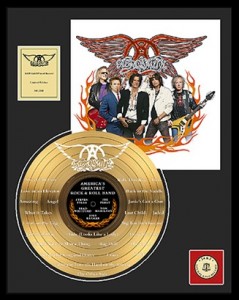 JM: What was the deciding factor that inspired you to take this idea on tour and to start your own company?
JM: What was the deciding factor that inspired you to take this idea on tour and to start your own company?
Scott: As consolidation grew, there was no way stations could devote the man-hours or budget to try something like this. Since I had relationships with the publishers, photographers and artists, my thought was it could work at stations across the country.
Plus, I brought this to radio stations as a former radio marketing person, not as an art dealer. I know what makes a successful radio event and I pay attention to what works for the station, its listeners and sponsors. I’m in the background putting all the pieces together and I’m obsessed with the details.
JM: Does the show work in all market sizes?
Scott: Yes. In smaller markets the show is a much bigger deal because it is unlike anything that they’ve ever seen. The audience and local media are very appreciative of us bringing a national show to their city. For example, in Sioux Falls, South Dakota, last week we were featured on the front page of the newspaper and all three local TV stations.
JM: What roadblocks have you encountered with “The Rock Art Show” and local radio stations?
Scott: We offer a turnkey, no cost, high profile imaging event that will bring listeners closer to their favorite station, yet some programmers refer me to sales and wash their hands of it. It’s not a typical “win tickets before they go on sale” promotion. Program Directors need to be the brand ambassadors for their radio stations and I believe that if you build it, sponsors will come.
There is no risk in putting the show together and it gives sales a perfect opportunity to invite their clients to see the show and start the sales process for the following year. Our hope is to make this an annual event like it is with great stations like WMGK/ Philadelphia, The Bay/Baltimore, WZLX/Boston, KQRS/Minneapolis, 97Rock/Buffalo, KZPS/Dallas, and others.
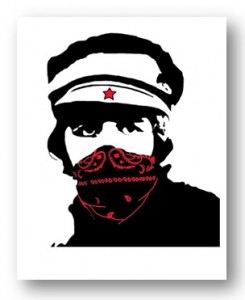 JM: Why does this work best for Classic Rock?
JM: Why does this work best for Classic Rock?
Scott: I think because its appeal spans generations. From Baby Boomers to young adults, the Beatles, Hendrix, Zeppelin, the Doors, and Stones speak to a wide variety of demos. Also, many classic rockers are artists, so there are published works that can be curated. When it comes to photos, in the early days, rock photographers were granted total access to performers. Not like today when photographers are only allowed shots from the photo pit which publicists have to approve.
I’ve also discovered in presenting these shows that there are The Beatles…and everyone else. It doesn’t matter if the station plays the Beatles or not, the public can’t get enough of them. We’ve created several brand extensions to reflect the Fab Four, including a Beatles Art Show, a Beatles Cartoon Art Show and a Ringo Starr Art Show (when he’s touring the U.S.).
JM: In a recent blog post, we explored the idea that physical art is no longer playing as large a role in music as it once did. Is that your experience as well?
Absolutely. The album cover was just as special as the music inside it. Artists like Pete Townshend with the Tommy cover and Carlos Santana with the Abraxas cover credited the artwork with inspiring the music they recorded not the other way around. Young people lose that when they download music.
Also in rock photography, before there was YouTube and music videos, the early rock photographers had to capture the concert or artist in a single photo. Baron Wolman, the first chief photographer at Rolling Stone magazine said that his photo had to capture the feel and excitement of the artist… tell the story of the concert in one black & white photo. Not an easy task before automatic light meters and digital cameras.
JM: What should radio people take away from your success?
Scott: Don’t be afraid to try something new, something that will cut through. I once worked for a GM who told me “I want to be an innovator… I just don’t want to be first.” That doesn’t work. Program Directors and Promotion Directors are the “keepers of the brand” and need to innovate. But they should keep in mind why the listeners tune to their stations – dynamic personalities and a connection to the music.
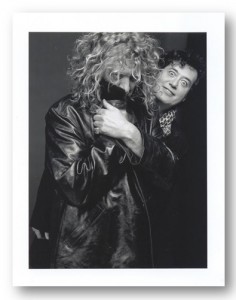 JM: What is your favorite story about a rock star (or their art)?
JM: What is your favorite story about a rock star (or their art)?
Scott: I was finishing up a show in a mall in Nashville and I heard a voice say, “There’s the guy to talk to….” I look up and it’s Robert Plant who was in the mall returning a pair of jeans! We talked for a while and he started going through all my Led Zeppelin posters and making comments on them, asking if he could have some.
I brought to him a fine art photo taken of him and Page from 1991 and he said, “I need to have this…I’ll even pay for it…but I want a discount because I’m in the picture.” I told him it would be my honor to give it to him, but he insisted on paying for it…at a discount.
He then started negotiating with me, busting my chops whenever he could, obviously enjoying watching me squirm. We finally settled on a price and I still have his signed credit card receipt hanging on the wall in my office. He then signed a print for me and posed for a photo.
Lesson: Even Robert Plant has a piece of rock art that he has to own. That’s the personal connection that I’m talking about!
Thanks to Mike Stern for putting together this week’s RMI. Scott Segelbaum’s art and event info can be seen here.
INNOVATION QUOTE OF THE WEEK
“Every child is an artist. The problem is staying an artist when you grow up.”
Pablo Picasso
More of Radio’s Most Innovative
- Radio's Most Innovative: High School Radio Day
- Radio’s Most Innovative: Jerry Lee
- Radio’s Most Innovative: Dan Vallie, National Radio Talent System
- Radio’s Most Innovative: KCSN’s Remote Studio and Performance Space
- Radio's Most Innovative: WTOP Digital
- A 2020 Lesson?It Could All Be Gone In A Flash - April 24, 2025
- How AI Can Give Radio Personalities More…PERSONALITY - April 23, 2025
- Can Radio Afford To Miss The Short Videos Boat? - April 22, 2025





Did projects with Scott for many years. First class all the way. Great to see his innovation recognized.
Scott’s a class act and does a great job with these shows. I can’t tell you how many of our clients over the years partnered with him to everyone’s mutual advantage – including the audience piece. Thanks, Dave.
Great article. Scott’s an extremely innovative guy and is always thinking about new opportunities. It was wonderful working with him while I was at WMGK.
Liam, thanks. I think there’s a lot of people around the country with similar stories about Scott’s work ethnic and creativity. Appreciate you taking the time to comment.
Scott does a great job connecting with our listeners, sharing his time and stories about each piece. The Rock Art Show has been a benchmark promotion for us in Buffalo.
Lesson II- Even Robert Plant returns jeans.
And it’s part of what makes 97Rock special. And yes, I’m having a bit of a problem visualizing Robert Plant returning pants.